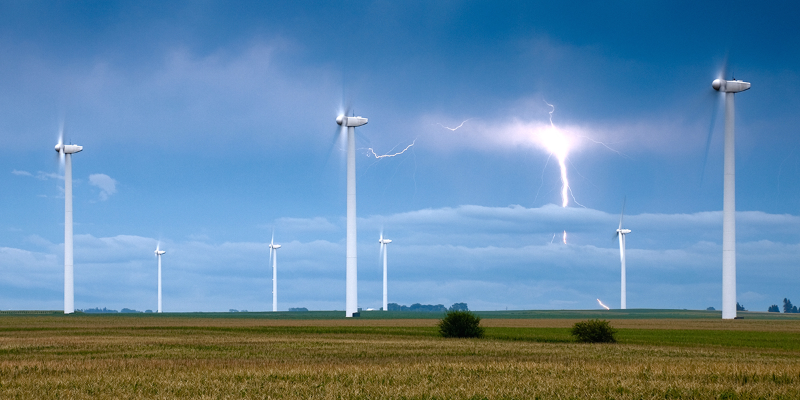
More than 30 GW of global new wind power capacity could be delayed this year due to COVID-19 business disruptions to blade manufacturers and the global supply chain according to a recent American Wind Energy Association (AWEA) report.
This follows record 2019 U.S. wind power capacity growth of 9.1 GW and forecasted U.S. growth of 15 GW of new wind power capacity by the end of 2020 according to a Wood Mackenzie report.
“Despite the pandemic disruptions to the industry, the growth of wind power capacity for 2020 is still likely to be higher than in 2019,” said CFC Vice President of Electric and Industry Energy Analysis Chris Maslak.
New CFC Report Covers Virus-Related Headwinds
A new CFC report, “COVID-19 Pandemic Impacts on Wind Power,” shares 2020 U.S. wind industry capacity growth forecasts and highlights disruptions to global demand, manufacturing and supply chains.
“AWEA reports the U.S. wind industry got off to a strong start in the first quarter of 2020 with 1,821 MW of new capacity installed, a 117 percent increase over the first quarter of 2019,” Maslak explained. “We will get a better idea of how the industry dealt with pandemic disruptions when the second-quarter installation numbers are announced.”
Project Delays, Manufacturing Disruptions and Supply Chain Shortages Will Slow 2020 Wind Power Growth
Wind power projects are being delayed in the U.S. due to disruptions to the development and permitting processes caused by shelter-at-home and social distancing requirements. Ørsted’s U.S. offshore wind projects of nearly 3 GW are at risk because some states do not consider wind project construction to be essential infrastructure work. Almost 2 GW of projects have been suspended.
Turbine manufactures are seeing lower-than-expected global demand for wind power equipment while some international blade factories are closed due to COVID-19 cases, and other manufacturers are permanently shuttering plants and discontinuing turbines to reduce costs.
The global supply chain is also stressed by shortages of key materials and components, including balsa, a wood material used in blade fabrication, and bearings, which were already in short supply before the pandemic.
“This added uncertainty due to the development and permitting processes. Challenges with manufacturing and delays in the supply chain could cause projects expected to be completed in 2020 to slip to 2021, putting potential tax benefits at risk,” Maslak said. “Even with the disruptions, 2020 growth could still exceed 2019 installed capacity as the demand for renewable energy remains strong.”
[button title="Download%20the%20Report" link="https%3A%2F%2Fportal.nrucfc.coop%2Fcontent%2Fdam%2Fcfc_assets%2Fmember_tier%2Fmember_docs%2FLibrary%2FbusinessIndustryReports%2FCOVID-19-Pandemic-Impacts-on-Wind-Power.pdf" /]
